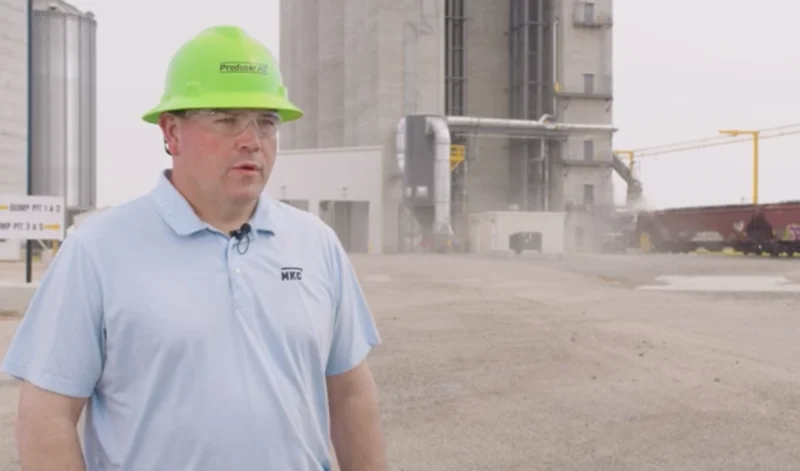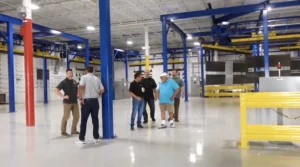What is the Best Material for Utility Poles?
They’re a familiar sight – they line city blocks and country roads, carrying powerlines and serving utilities. Utility poles come in a variety of materials and designs, but what material actually provides the best combination of performance, cost, and environmental impact reduction?
Let’s take a look at some of the key materials used, how they differ, and which might be the best long-term solution for utilities looking to keep pace with increasing demand.
Steel vs Wood Utility Poles
Wood utility poles can be made of many materials, though woods like southern pine are common. However, this isn’t the only material that contributes to the final product – chromated copper arsenic (CCA) is often used to treat wooden utility poles to prevent termite infection and overall decay.
Still, even with these measures – which can have adverse effects on the environment to begin with – wood utility poles are certainly not permanent installations. An Electric Power Research study estimated that wood utility poles can last up to 50 years, though 30 to 40 years of true service life is more common.
Steel utility poles can be manufactured to the same dimensions as wooden poles but require no harsh chemical treatments. They’re often galvanized to protect them from corrosion and other harsh elements. It’s been estimated that steel utility poles can exhibit service lives of 50-80 years.
While wood is generally considered a green material, the actual impact of wood utility poles on our shared environment is greater than you might imagine.
In addition to their treatment with CCA, the harvesting and manufacturing of wood utility poles can actually release more greenhouse gases and aerosols than that of steel utility poles. Electricity is required to produce CCA in the first place, and shorter lifetimes mean more truck rolls, more emissions, and more destruction of the habitats of potentially endangered species.
Steel utility poles, on the other hand, exhibit far less environmental impact. Though steel production and galvanization is not without environmental impact whatsoever, it is generally lesser, and the longer lifespans of steel utility poles also leads to key energy savings.
From Lower Life Cycle Cost to Ease of Installation: Steel Utility Poles Provide a Vast Number of Benefits
In addition to the environmental benefits, steel utility poles also exhibit:
- More uniform dimensions
- No need for treatment with harsh chemicals (that eventually end up in landfills)
- Easy installation
- Greater durability, particularly when galvanized
- Lower overall life cycle cost due to longer service life
- Superior strength and resistance to damage during service
- Lower weights – often 30% lighter and as much as 70% lighter
- Clean, appealing aesthetics
- 100% recyclability
Steel Utility Poles Excel in Comprehensive Study
A study commissioned by the Steel Market Development Institute and conducted by SCS Global Services sought to analyze the performance of 45-foot-tall, Class 2/Grade B steel utility poles and wood utility poles in the southeastern U.S. over the course of a 40-year horizon.
As the study outlines, “two different scenarios were compared – one in which wood poles were taken out of service as a result of pole failure and continued to be replaced by Class 2 wood poles, and the other in which wood poles taken out of service due to pole failure were replaced by galvanized steel utility poles.”
The study confirmed the general belief that steel utility poles, over the totality of their service life, exhibit a much smaller environmental impact than their wood utility pole counterparts, which were assumed to need replacement every 40 years. The steel utility poles were assumed to have an 80-year service life.
The study’s key findings were that:
- The steel utility pole scenario would use 300,000 fewer barrels of oil over 40 years
- The steel utility pole scenario would impact the habitats of three species, whereas the wood utility pole scenario would impact seven
- Approximately 15 acres of terrestrial biome would be disturbed by the steel utility pole scenario compared to 12,000 for wood utility poles
- In the wood utility pole scenario, the CCA used would result in nearly 600,000 tons of waste over 40 years
Steel Utility Poles Ready to Shine as Utility Demands Grow
The demand for energy has asked a lot of utility companies, and that means saving money wherever possible. By choosing more cost-effective steel utility poles, utilities can not only save resources and money, but lower their environmental impact and install solutions set to last much longer than wood utility poles.
To learn more about AZZ’s role in the galvanization of steel utility poles, contact them today.
Follow us on social media for the latest updates in B2B!
Twitter – @MarketScale
Facebook – facebook.com/marketscale
LinkedIn – linkedin.com/company/marketscale









